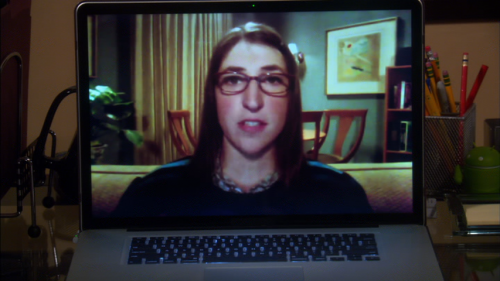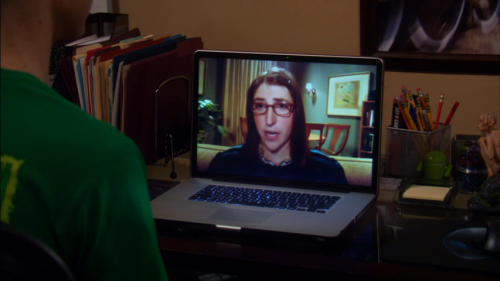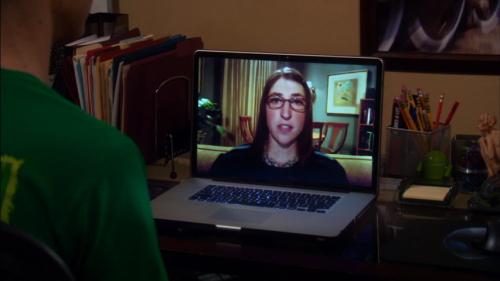When I was growing up, our family had a few pets over the years. A bird when I was young (named Vogel, which is German for “bird”, in a rare moment of literalness in my family), then a cat, Filia (my mom’s), then another cat, George (my brother’s). Eventually, though, George left to live out the rest of his days in Fairbanks with my brother, and Filia died.
When Filia died, my mom decided that she didn’t want another flesh-and-blood pet, but still wanted something — so, mom and dad got a Furby. I’ve never been too sure just why or how this ended up being the choice, but so it was, and so they did. I’m sure I didn’t tease them at all about this. Not at all.
One summer, my parents took a trip down to Florida to visit my mom’s parents. Since their “pet” was more easily transported than earlier pets were, they decided to bring the Furby with them to show it to my grandparents. Unfortunately, in the midst of packing, the Furby was forgotten, and was left sitting on the dining room table. Once they got to Florida, unpacked, and realized their mistake, mom gave me a call to ask if I could send the Furby down to them.
“Really? You want me to mail the Furby?”
Yup. She did.
Being a dutiful and obedient son (as always, as I’m sure they’ll be happy to verify), I drove across town to their house, and found the Furby sitting patiently on the table.
Now, I’d never had a Furby. I knew a little bit about them, mostly through cultural osmosis, but this was my first time actually encountering one of these mysterious mogwai-like contraptions. I did know that they were motion-, sound-, and light-activated, though, so I tried to take precautions as I prepared the Furby for its journey.
I gently picked it up, and, moving as cautiously as possible, examined it to see if I could find an “off” switch. I assume that it must have had one somewhere, but if it did, I couldn’t find it. So I carefully wrapped a couple sheets of bubble wrap around the Furby, picked it up, slid it into a padded shipping envelope, sealed it up, and put it back down on the table.
And a high, muffled voice came from the envelope: “No light!”
Oh, dear. It’s awake.
“No light! Furby scared!”
You’ve got to be kidding me.
As I drove to the post office, the package on the seat next to me would chatter for a bit, fall silent, then wake up again as I hit a bump in the road or as the package slid slightly across the seat as I went around a turn.
Standing in line at the post office, I cradled the package gently in my arms. The Furby had been quiet for a while, and I was determined not to disturb its slumber. I reached the desk, gently put the envelope on the counter, and slid it across to the post office worker. “This needs to go to Florida.”
“No problem,” the attendent said, as she picked up the package and dropped it onto the scale.
“Furby scared! No light!” And the package wiggled a little bit as the Furby (assumedly) opened its eyes and frantically looked around its prison, wiggling its ears in panic.
The attendent raised her eyebrows and looked at me. “Um…it’s a Furby. It’s kind of my mom’s pet, and she wants to show it to her parents….” I trailed off, feeling foolish, as the muffled nonsense language of the Furby continued to come from the package.
I don’t remember anymore if she rolled her eyes or smirked — or both — but she did carefully attach a “FRAGILE” sticker to the outside of the envelope, along with however many stamps it took to ship a pound-and-a-half bundle of babbling furry automaton from Alaska to Florida. “Thanks,” I said, as she gently tossed the envelope into the outgoing bin, to the accompaniment of muffled “Wheeeeeee!” from the Furby. “No problem,” she said. “NEXT!”
As I left the post office and drove home, I couldn’t help but giggle to myself, over and over, as I pictured the poor, traumatized, blind Furby traveling across the country. Falling asleep in bins at one or another stop on the way, only to wake up as soon as it moved, crying out for light, for company, for comfort. At the poor post office workers and delivery people picking up an apparently innocent package, only to suddenly have it wiggle in their hands as a small voice cried out at them — “No light! Furby scared!”
The Furby did make it to Florida — however, mom confirmed that by the time it got there, its batteries were well and truly dead. Which, horrible as it seems, couldn’t help but launch me into another fit of guilty hilarity at the thought of the poor confused Furby, cocooned in bubble wrap, slowly expiring, expending its last, desperate reserves of energy on ever-quieter pleas for light and comfort.
I’m sure a new set of batteries worked their magic and revived the Furby to its usual happy chatterbox state. But I’ve always felt a weird sort of guilty glee at my role in the (temporary) psychological torture and murder of a poor, innocent Furby.







